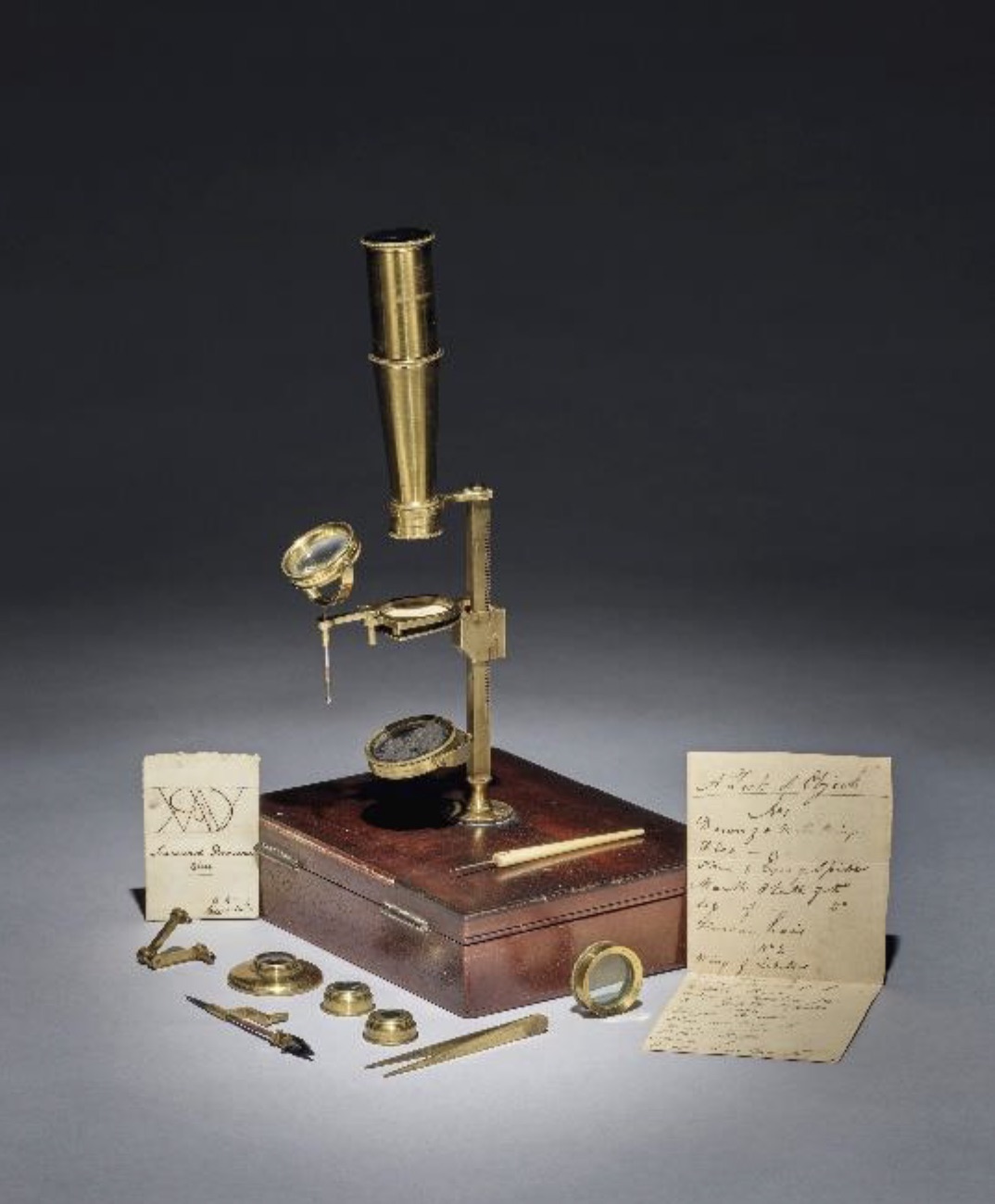All eyes on Darwin microscope
A microscope that was gifted by the English naturalist, geologist and biologist Charles Darwin to his son, Leonard Darwin in 1864 will sell at Christie’s next month.
Christie’s Valuable Books & Manuscripts auction will present the Darwin Family Microscope, estimated at £250,000–£350,000, as part of Christie’s Classic Week.
 With direct provenance from Charles Darwin (1809-1882), the Gould-type microscope by Cary was gifted by Darwin to his son Leonard Darwin (1850-1943) in 1864. It has passed by descent and remained in the family for nearly 200 years.
With direct provenance from Charles Darwin (1809-1882), the Gould-type microscope by Cary was gifted by Darwin to his son Leonard Darwin (1850-1943) in 1864. It has passed by descent and remained in the family for nearly 200 years.
James Hyslop, Head of Department, Scientific Instruments, Globes & Natural History, Christie’s, said: “It is an enormous privilege to present the Darwin Family Microscope to collectors this season, with a history that spans six generations of the family. I find it incredibly exciting to look through this microscope and see what Charles would have seen when he pressed his eye to the lens. An instrument of such great scientific importance is incredibly rare, it is the only Darwin microscope to have ever been offered at auction and only five other microscopes owned by Charles are known to exist.”
Charles Darwin’s research career began with his investigation into the sea creatures being dredged up from Scotland’s Firth of Forth while trying to avoid his medical studies at the University of Edinburgh. Darwin’s studies of these strange ‘zoophytes’ began in 1826 and reached a successful conclusion in the spring of 1827, when he presented his first scientific paper to the University’s Plinian Society.
These dates coincide with the appearance of the present microscope on the market, which was designed by Charles Gould for the firm Cary around 1825. Of the six surviving microscopes associated with Charles Darwin, four are known to have been acquired later (two in 1831, one each in 1847 and around 1848), and the other cannot be used for studying marine invertebrates.
 In this early research Darwin was contributing to Robert Grant’s radical reinterpretation of the animal kingdom, in which apparently simple creatures – like the ‘zoophytes’ – were understood to be at the beginning of a natural order that led up to Homo sapiens. This preoccupation with the ‘first’ creatures was picked up again by Darwin in the crucial period during and immediately following the Beagle Voyage.
In this early research Darwin was contributing to Robert Grant’s radical reinterpretation of the animal kingdom, in which apparently simple creatures – like the ‘zoophytes’ – were understood to be at the beginning of a natural order that led up to Homo sapiens. This preoccupation with the ‘first’ creatures was picked up again by Darwin in the crucial period during and immediately following the Beagle Voyage.
On the Beagle Voyage Darwin is known to have used one of the microscopes now preserved at Down House. The other early microscopes at Down are a small botanical microscope, and another instrument by Cary. Darwin’s barnacle researches were largely carried out with the large Smith and Beck compound microscope now held at the Whipple Museum.
The final known microscope is the ‘prototype’ of Darwin’s own modified aquatic microscope, which went into production by Smith and Beck in the 1840s.
In a house filled with microscopes, it is easy to understand how Charles’ son Leonard would have acquired what would have been quite an old instrument by the time he was able to use it. Indeed Charles himself provided a glimpse of their playful work together in a letter to his eldest son in 1858: ‘Lenny was dissecting under my microscope and he turned round very gravely and said “don’t you think, papa, that I shall be very glad of this all my future life”.’


